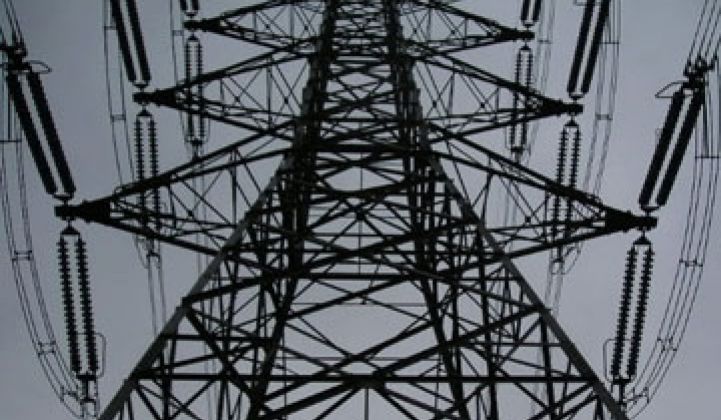Seven new transmission lines costing $12 billion would likely be needed for California's utilities to meet a proposed goal to mix 33 percent of its electricity supplies from renewable sources by 2020, according to a new report by the California Public Utilities Commission.
The 94-page preliminary report, released last Friday, aimed to tell policymakers what it might take to get to the 33 percent threshold, a mandate that is typically called the renewable portfolio standard.
To achieve the 33 percent goal, the state should create policies that would make it easier to buy or generate renewable electricity, including approving projects that do not require new transmission lines or creating zones set aside specifically for renewable power projects, the report said.
"Achieving 33 percent RPS by the year 2020 is highly ambitious, given the magnitude of he infrastructure buildout required," according to the report.
A bill to set the 33 percent RPS is winding its way through the state Legislature, with the Senate passing its version in March this year.
California has one of the most aggressive renewable energy mandates in the country. The state already requires the utilities to generate 20 percent of its electricity from renewables by 2010.
More than 30 have renewable portfolio standards, according to data collected by the North Carolina State University.
California utilities are trying to meet the 20 percent goal by signing power purchase agreements with solar, wind, geothermal and other renewable energy producers. As of 2007, 12.7 percent of the electricity sold by the state's three largest investor-owned utilities came from renewable sources, according to the latest figure published by the CPUC. The utilities are Pacific Gas and Electric, San Diego Gas & Electric and Southern California Edison.
It remains to be seen whether the utilities could meet the 20 percent goal next year, given the costs and the long development time for many of these power projects.
Obtaining suitable land and undergoing the permitting process could take a few years. The financial market crisis has made it difficult for power project developers to line up millions of dollars needed for their projects (see Solar Companies Fear Delays as Feds Work Slow Magic).
The state already would need to build four new transmission lines costing about $4 billion to meet the 20 percent goal, and three of them are under development, the CPUC report said.
Getting to 33 percent would require utilities to triple the amount of renewable electricity from 27 terawatt hours today to about 75 terawatt hours in 2010, the report said.
Electricity costs would go up by 2020 regardless of whether California has a renewable energy mandate. The costs are likely to go up by 16.7 percent in 2020 from 2008.
If the state only has to achieve a RPS of 20 percent, its electricity expenditure is likely to be 2.8 percent higher by 2020 than if it had stopped developing renewable energy beyond 2007 and relied instead only on power from natural gas-fired power plants.
And if the state wants to achieve the 33 percent mandate, the increase would be 10.2 percent higher than the natural gas-only scenario, the report said.



